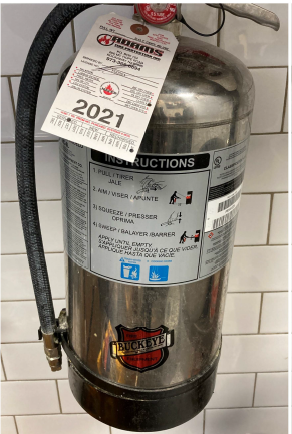 Why are special types of fire extinguishers needed in various settings to control fires?
Why are special types of fire extinguishers needed in various settings to control fires?
February 9, 2022
by Nils Deacon, Manager, Inspections and Rating Services
Fire extinguishers are designated for different classes of fires, using various extinguishing agents. The classes of fire are A, B, C, D, and K.
- A rated are for fires in combustibles, such as wood and paper.
- B rated are for flammable liquids such as gasoline, oil, and grease.
- C rated are for electrically energized fires.
- D rated are for fires that involve combustible metals including magnesium, titanium, and sodium, which may react with common extinguishing agents.
- K are for fires involving combustible cooking media – kitchen fires.
They can be combined, most commonly as an ABC dry chemical fire extinguisher.
However, there are areas where only a specific rating is acceptable. This would be the case for K rated wet chemical fire extinguishers used in conjunction with wet chemical automatic extinguishing systems.
Sensitive electrical equipment such as computers and servers are often protected by Halon Alternative Clean Agents. They extinguish the fire with a mist that does not leave residue that would be difficult to remove and could damage the equipment.
NFPA 10 also details the amount of agent needed to adequately fight the different types of fires. This is necessary in order to know how many extinguishers of each type are needed in the building.
DISCLAIMER: This information reflects the interpretation of MSO, Inc. with regard to NFPA Standards and Codes. It does not represent NFPA’s official position on the items discussed.
K wet chemical extinguisher in commercial kitchen.

